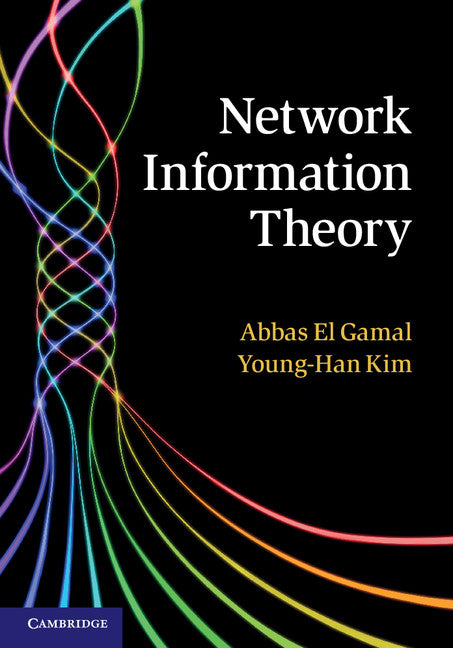Freshly Printed - allow 6 days lead
Couldn't load pickup availability
Network Information Theory
The first complete and unified coverage of both classical and recent results, including numerous worked examples and over 250 exercises.
Abbas El Gamal (Author), Young-Han Kim (Author)
9781107008731, Cambridge University Press
Hardback, published 8 December 2011
714 pages, 231 b/w illus. 12 tables 273 exercises
25.4 x 18.2 x 3.6 cm, 1.54 kg
'The presentation is based on basic knowledge of probability and elementary mathematical tools and techniques, making the book accessible to graduate students and for self-study. But the width of covering (this is the first unified treatment of both classical and recent results) makes the book valuable also to researchers and practitioners.' Jaak Henno, Zentralblatt MATH
This comprehensive treatment of network information theory and its applications provides the first unified coverage of both classical and recent results. With an approach that balances the introduction of new models and new coding techniques, readers are guided through Shannon's point-to-point information theory, single-hop networks, multihop networks, and extensions to distributed computing, secrecy, wireless communication, and networking. Elementary mathematical tools and techniques are used throughout, requiring only basic knowledge of probability, whilst unified proofs of coding theorems are based on a few simple lemmas, making the text accessible to newcomers. Key topics covered include successive cancellation and superposition coding, MIMO wireless communication, network coding, and cooperative relaying. Also covered are feedback and interactive communication, capacity approximations and scaling laws, and asynchronous and random access channels. This book is ideal for use in the classroom, for self-study, and as a reference for researchers and engineers in industry and academia.
1. Introduction
Part I. Preliminaries: 2. Information measures and typicality
3. Point-to-point information theory
Part II. Single-Hop Networks: 4. Multiple access channels
5. Degraded broadcast channels
6. Interference channels
7. Channels with state
8. General broadcast channels
9. Gaussian vector channels
10. Distributed lossless compression
11. Lossy compression with side information
12. Distributed lossy compression
13. Multiple description coding
14. Joint source-channel coding
Part III. Multihop Networks: 15. Graphical networks
16. Relay channels
17. Interactive channel coding
18. Discrete memoryless networks
19. Gaussian networks
20. Compression over graphical networks
Part IV. Extensions: 21. Communication for computing
22. Information theoretic secrecy
23. Wireless fading channels
24. Networking and information theory
Appendices: A. Convex sets and functions
B. Probability and estimation
C. Cardinality bounding techniques
D. Fourier–Motzkin elimination
E. Convex optimization.
Subject Areas: WAP [wireless technology TJKW], Telephone technology [TJKT], Satellite communication [TJKS], Communications engineering / telecommunications [TJK]


